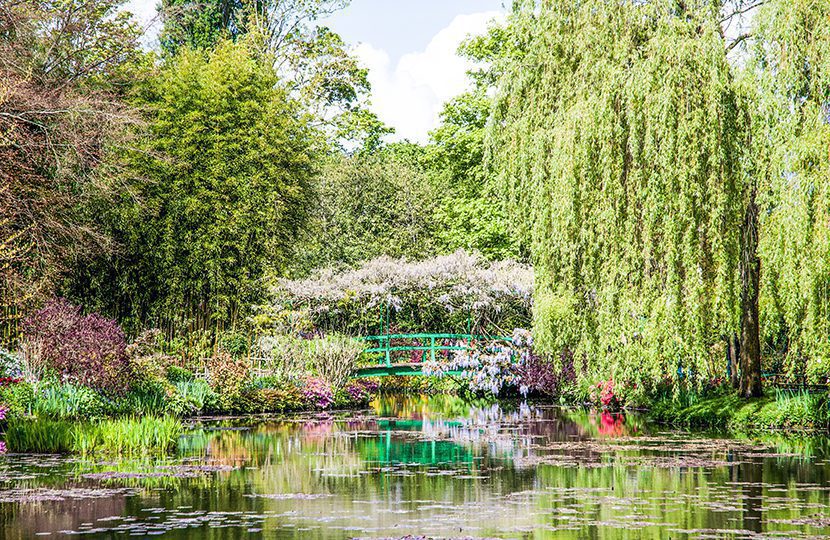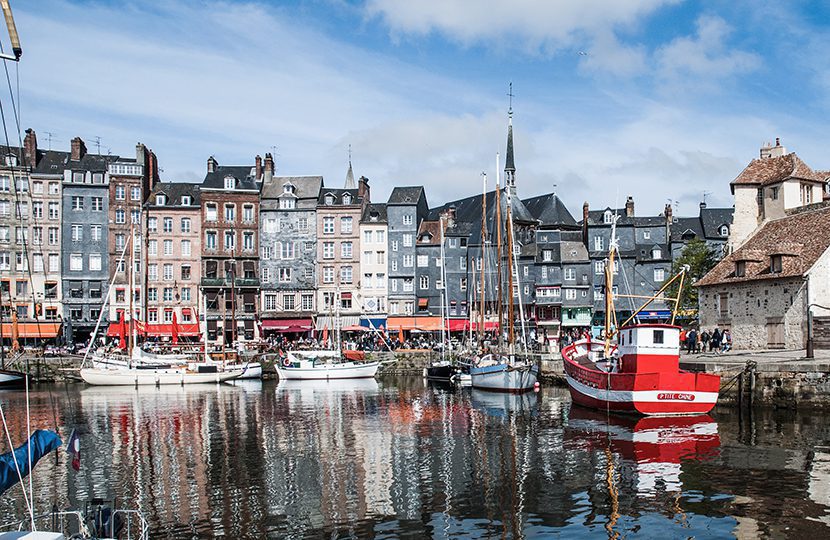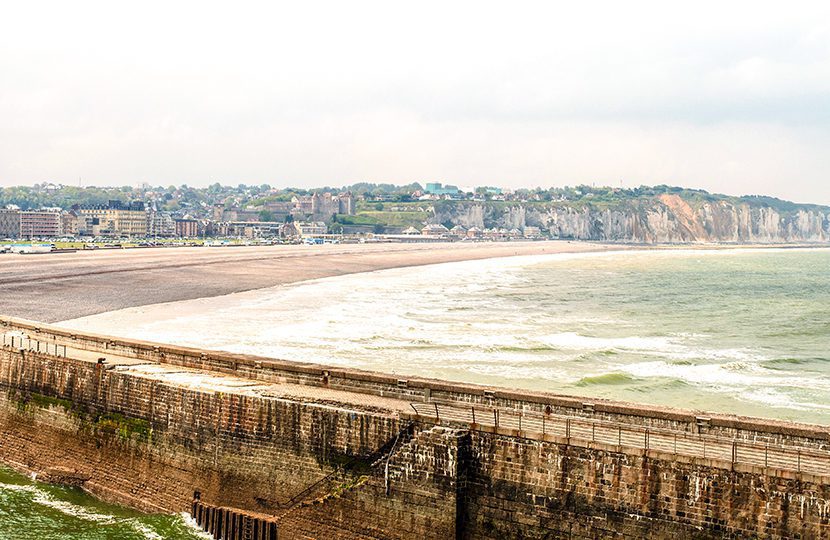I have often driven through Normandy and admired the landscape and rural architecture and promised myself I would explore the region in more depth.
[vc_row][vc_column width=”1/4″][vc_separator color=”black” border_width=”10″][vc_custom_heading text=”Follow the footsteps of Impressionism’s great Masters”][vc_separator color=”black” border_width=”2″][vc_widget_sidebar sidebar_id=”sidebar-page”][/vc_column][vc_column width=”3/4″][vc_column_text]I have often driven through Normandy and admired the landscape and rural architecture and promised myself I would explore the region in more depth. After visiting a flower show where the Normandy Tourist Board were sponsoring a garden celebrating Impressionism in Normandy, it was about time for a visit to see what attracted the Impressionists to Normandy.
Impressionism was less about detail and realism in paintings and more about an accurate depiction of light and its changing qualities. This was best done outdoors where they could capture the transient effects of light on a subject and were among the first group of artists who took painting outside en plein air. The advent of the railways along the Seine Valley from Paris to the coast contributed to Normandy became the Cradle of Impressionism.

The cliffs at Etretat
JARDIN CLAUDE MONET, GIVERNY
Both my wife and I enjoy visiting gardens so Claude Monet’s garden at Giverny was an obvious choice to visit. Monet once said that his greatest creation was not any of his paintings but his gardening, on entering the garden, we could see why. We were met with an explosion of colour in a design reminiscent of his paintings. Such beautiful use of colour with bold spring flowers underplanted with complimentary colours designed by an artist with an eye for colour and light.
Leaving the vibrancy of the garden beds behind we made our way to the water lily ponds. Almost immediately we had a feeling of deja vu; it was like walking into a painting. The water lilies series are perhaps the best known of Monet’s paintings. Today the willows, Japanese bridges and of course the water lilies are as familiar as in his paintings.
THE CITY OF ROUEN
Rouen is a pretty city with streets half-timbered houses and a magnificent cathedral. The day I was there it was rainy, overcast and grey; not the best day for sightseeing. However such inclement conditions, I discovered after visiting the Musée des Beaux Arts’ small collection of Impressionist paintings, did not deter the artists. Claude Monet painted the façade of the impressive Cathedral almost 30 times in different light, seasonal and meteorological conditions to illustrate the interplay of light and shadow on the intricate carvings.
In the drizzling rain, I strolled down one of the streets to Le Gros Horloge, or Great Clock; I had seen a painting by Leon Lemaître depicting the clock and its archway in equally as inclement weather. I wanted to see it as he had seen it.
IT DID NOT MATTER THAT THE SUN HAD NOT SHONE; I HAD SEEN ROUEN AS THE IMPRESSIONISTS HAD SEEN IT.
THE RIVER SEINE
The River Seine meanders through Normandy, and it was great to be able to wander along its banks, picnic beside the water or explore the wood slopes of the valley. The Impressionist artists were keen on painting au pleine air rather than in the studio. The Valley of the Seine offers fantastic light, great landscapes and other subjects for painting. I spent a couple of days exploring the wooded valleys and marshlands of the Boucles de Seine Regional Park where the Impressionists such as Alfred Sisley used to paint.
HONFLEUR
The moment I saw the Vieux Bassin in Honfleur, I knew Honfleur to be among the prettiest little harbours in France. Colourful old houses line Quai Sainte Catherine’s with their reflections in the water of the harbour. I experimented with my own Impressionistic images by photographing these reflections in the water and spent time photographing the subjects the Impressionists painted.[/vc_column_text][/vc_column][/vc_row][vc_row][vc_column][vc_column_text]
[/vc_column_text][/vc_column][/vc_row][vc_row][vc_column width=”1/4″][/vc_column][vc_column width=”3/4″][vc_column_text]The port town is the birthplace of Eugène Boudin who advised the young Monet to paint “the sea and sky” and has a museum dedicated to his work. Monet obviously took this advice to heart as many of his creations feature either or both.
LE HAVRE
Claude Monet grew up in Le Havre across the estuary from Honfleur. It was not a place I had on my bucket list for France, but I discovered it was where Claude Monet painted the port scene Impression, Soleil Levant (Impression, Sunrise). It was this painting that gave the Impressionist movement its name. It is also home to the Musée Malraux (MuMa), one of the most important Impressionist art collections outside Paris with works by Monet, Degas, Renoir, Sisley, Pissarro, Manet and Boudin.
ÉTRETAT
Having seen several paintings of the Falaises d’Étretat I wanted to see them in real life. I was not disappointed; they are stunning. The cliffs of Étretat are what give the Cȏte d’Alâtre or Alabaster Coast its name. They were a magnet for the Impressionist artists who would set up their easels on the seafront or on the cliff tops. I followed in their footsteps armed, not with paintbrushes and easel but my camera and tripod. Information boards now show the viewpoints from which different artists painted their most iconic pictures of Étretat.[/vc_column_text][/vc_column][/vc_row][vc_row][vc_column][vc_column_text]
[/vc_column_text][/vc_column][/vc_row][vc_row][vc_column width=”1/4″][/vc_column][vc_column width=”3/4″][vc_column_text]Subscribe to the latest edition now by clicking here.
If you would like to comment on this story or anything else you have seen on World Travel Magazine, head over to our Facebook page or message us on Twitter.
And if you liked this story, subscribe to our bi-monthly World Travel Magazine, a handpicked selection of editorial features and stories from Global Destinations, Inspire Me, Insider, Style File, Wellness & Travel, City Travel, Suite Life, At Leisure, Short Breaks and much more.[/vc_column_text][/vc_column][/vc_row]





